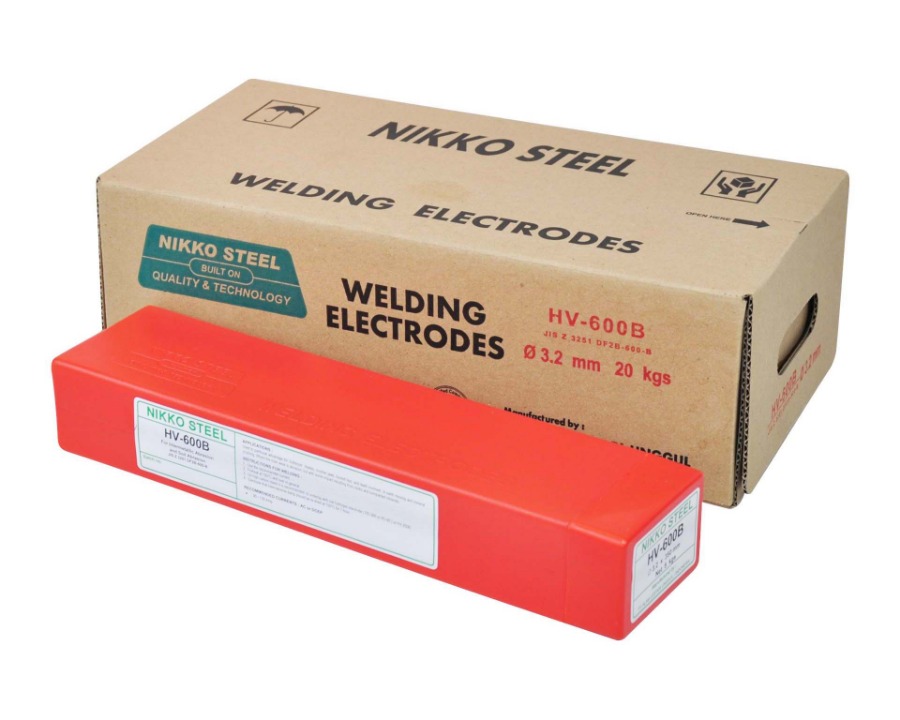LOW HYDROGEN - LOW ALLOY - HIGH EFFICIENCY HARDFACING ELECTRODE FOR BALANCED RESISTANCE TO ABRASION AND IMPACT LOADING
HV-600B

CLASSIFICATION
AWS A5.13 EFe3 | DIN 8555 E6-UM-60-GP | JIS Z 3251 DF3B – 600B
PRODUCT DESCRIPTION
The design emphasis of the chemically basic flux is engineered to ensure that the weld metal hardness levels demanded by the specification are fully met without detracting from the toughness levels associated with this class of alloy. The basic flux containing the appropriate alloying elements and a balanced addition of iron powder is extruded onto a high purity ferritic core wire using a balance of silicates that ensures both coating strength and resistance to moisture absorption.
WELDING FEATURES OF THE ELECTRODE
The electrode is suitable for both AC and DC and may be used in all positions except vertical down. Arc stability is good as is slag detachability. Weld seams are smooth, evenly rippled and slightly convex in shape. The metal recovery of the electrode is some 120% with respect to weight of the core wire
APPLICATIONS AND MATERIALS TO BE WELDED
On high carbon steels HV-250B should be used as a buffer layer. The weld deposit has good resistance to abrasion, under normal circumstances
is crack free, and will withstand a reasonable amount of impact loading. Used to particular advantage for : Bulldozer blades, crusher jaws, bucket lips and teeth involved in earth moving and mineral crushing. Where the main wear is abrasion, but with some impact resulting from rocks and compacted minerals. Under normal circumstances the weld metal is non-machinable
WELDING AMPERAGE AC and DC
OTHER DATA
Electrodes that have become damp should be re-dried at 150ºC for 1 hour.